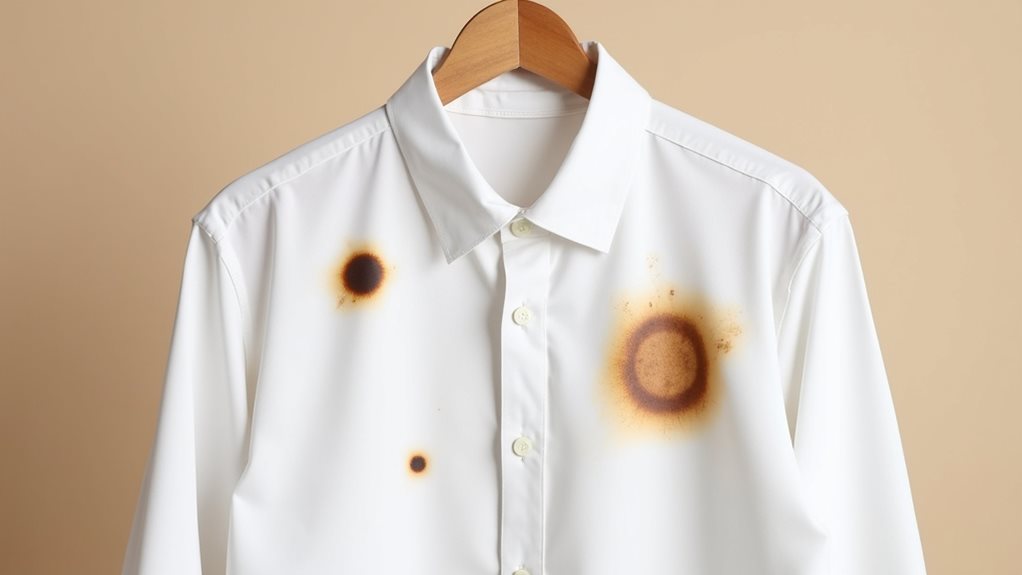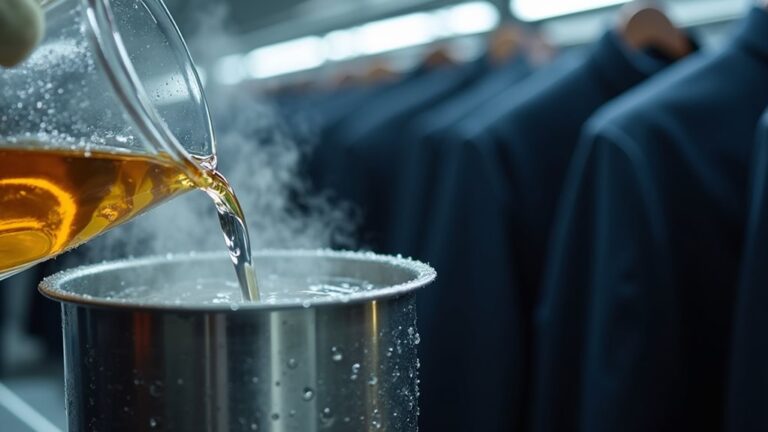Dry cleaning can reveal hidden stains rather than create new ones, and honestly, it’s like uncovering secrets your clothes have been keeping from you. When heat from cleaning machines hits invisible residues from spills you thought you cleaned, those colorless oils and sugars can suddenly carameliza into permanent brown spots that’ll make you question your memory. Cross-contamination between garments and harsh chemical reactions with delicate fabrics can also transform your favorite pieces in ways you’d never expect.
How Heat From Dry Cleaning Machines Reveals Hidden Stains
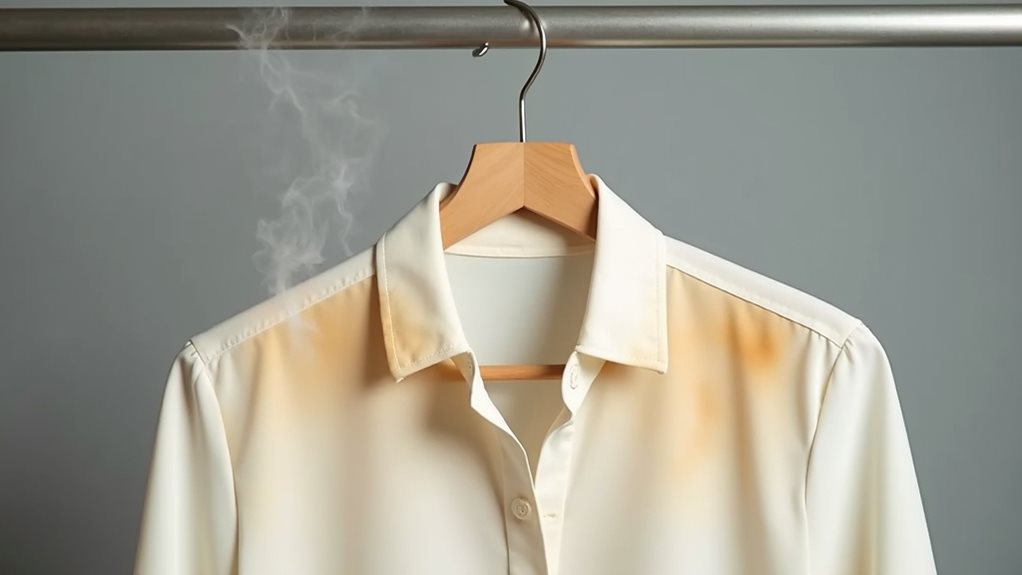
When I first started taking my clothes to the dry cleaner, I naively assumed that the process would only make things better, never imagining that the very heat designed to refresh my garments could actually betray me by revealing stains I didn’t even know existed.
Here’s what I learned the hard way: that innocent-looking white shirt you thought was perfectly clean? The dry cleaning heat can expose hidden stains through oxidizing processes that transform colorless residues into visible brown spots.
These chemical reactions occur when previously invisible substances like oils, sugars, or proteins caramelize under high temperatures. Your professional dry cleaner’s stain removal team encounters this daily, which is why proper garment care means treating spills immediately, even when they seem harmless or disappear completely.
Since dry cleaning uses chemical solvents rather than water, it’s particularly limited when dealing with water-soluble stains like perspiration marks that contain alkaline salts and proteins.
When Solvents and Chemicals React With Fabric Residues
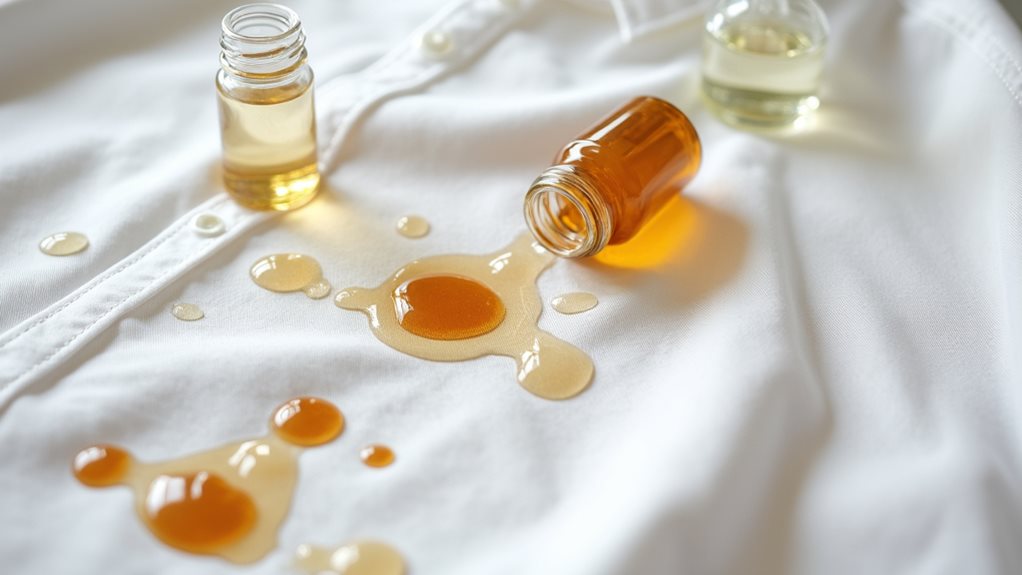
Although I’d watched my favorite blouse emerge from the dry cleaner with mysterious new spots more than once, it wasn’t until I chatted with Maria, my longtime dry cleaning professional, that I finally understood the sneaky chemistry happening behind those swinging doors.
She explained how solvents like perchloroethylene don’t just clean—they react with fabric residues, turning invisible oils and sugars into permanent stains through complex chemical reactions.
These unwanted reactions during the cleaning process can cause dramatic color changes, making previously clear spills suddenly appear dark and stubborn.
That’s why skilled stain removal technicians with proper expertise are worth their weight in gold, and why I now always mention any spills to prevent these frustrating surprises! 😅
Beyond staining concerns, it’s important to let freshly dry cleaned garments air out properly since PERC residues can remain on clothes and potentially cause skin irritation or respiratory issues.
Improper Handling of Delicate Fabrics During Processing
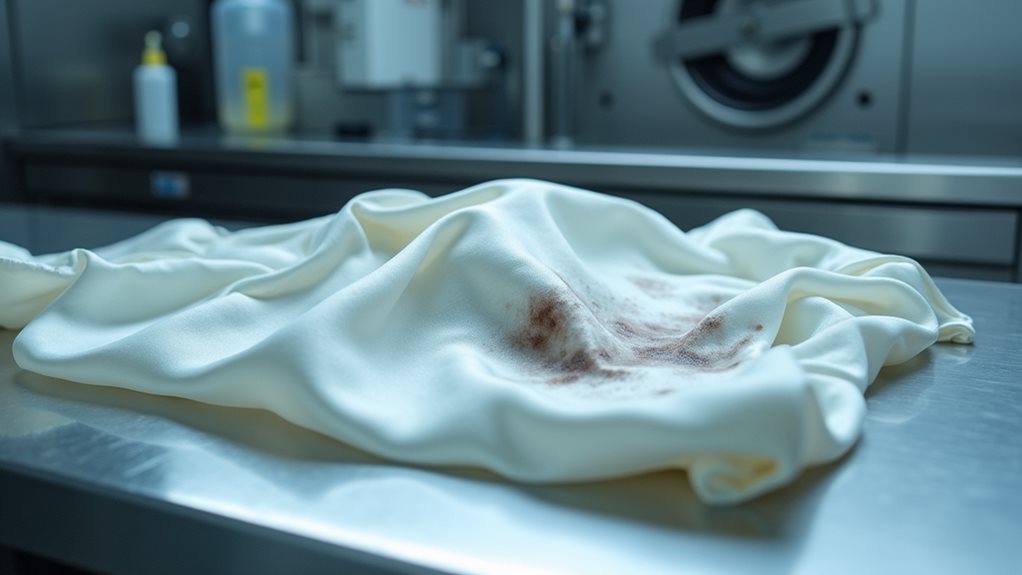
Since delicate fabrics need the same gentle touch you’d use when handling a butterfly’s wings, I learned the hard way that not all professional dry cleaners treat your precious silk blouses and cashmere sweaters with the respect they deserve.
Improper handling during processing can turn your favorite garments into expensive disasters, especially when cleaners apply aggressive cleaning methods meant for sturdier materials.
Without proper communication about your garment’s stain history, hidden stains can emerge after exposure to heat and solvents, creating unintended staining that wasn’t there before.
I’ve watched delicate fabrics fade and distort when cleaners skip vital inspection steps, transforming minor issues into major problems.
Materials like silk, wool, and cashmere require chemical solvents instead of water to maintain their integrity, but improper solvent application can create permanent discoloration.
Always discuss your fabric’s specific needs upfront to prevent stains during cleaning – it’s your best defense!
Cross-Contamination From Previously Cleaned Garments
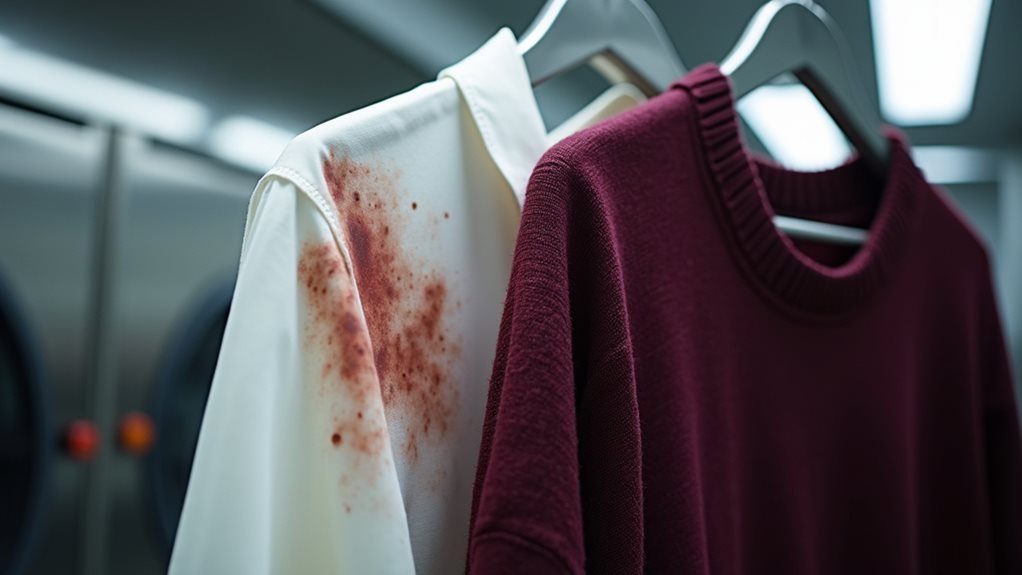
If you’ve ever wondered why your pristine white shirt came back from the cleaner with mysterious brown spots that weren’t there before, you’ve likely encountered the frustrating reality of cross-contamination from previously cleaned garments.
This happens when cleaning facilities don’t properly separate items based on their stain history, allowing hidden stains from one garment to transfer onto yours during the cleaning process.
Those sneaky stains or residues can leach from previously cleaned garments that weren’t thoroughly treated initially. Without skilled stain removal technicians who know how to pre-treat garments properly, these unintended transfers become common.
The heat from cleaning machines can even activate invisible stains, creating new problems where none existed before – talk about adding insult to injury! 😤
While dry cleaning excels at removing oil-based stains and grease that water-based washing cannot handle, contamination issues arise when facilities fail to properly address these stubborn residues before mixing garments together.
What to Do When New Stains Appear After Dry Cleaning

Three simple words can save you a world of headache when you discover mysterious new stains on your freshly cleaned clothes: document, communicate, and act fast.
First, photograph everything before leaving the dry cleaner—trust me, memory fades faster than your favorite jeans in sunlight. These new stains might’ve emerged from residual chemicals during the cleaning process, or perhaps existing stains you didn’t notice became visible after treatment.
Contact the cleaner immediately to discuss potential causes and explore solutions together. Remember, professional dry cleaning establishments often have liability limitations, so understanding your customer rights upfront protects you later.
Don’t let embarrassment stop you from speaking up—good cleaners want to resolve issues and maintain their reputation.
Just as contaminated solvent can cause persistent odors in dry cleaned garments, it can also lead to unexpected staining on your clothes.

